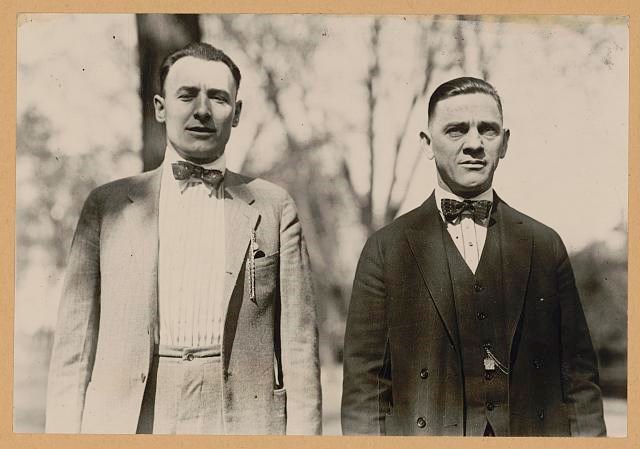Part of a series of articles titled West Virginia Mine Wars.
Next: Mother Jones
Article

West Virginia History OnView
Starting in the 1890s, coal miners began attempting to organize the coalfields of southern West Virginia to fight the injustices of the coal mine labor system. As was common in most labor struggles of this era, mine owners and operators fiercely resisted the workers’ efforts. In 1912, the conflict came to a violent head in the Kanawha and New River coal fields with a “wildcat” strike in which workers launched a work stoppage without union assistance. This marked the beginning of what has come to be known as the West Virginia mine wars. When operators in the Paint Creek Valley in Kanawha County refused to grant union workers a modest pay raise that was on par with what other regional companies had given to their employees, thousands of nonunion miners went on strike. Soon, 7,500 nonunion miners in nearby Cabin Creek joined them, spurred by the oppressive rule of the coal operators. The strike that ensued followed the typical pattern of a work stoppage, but when company guards started forcibly evicting mining families from company-owned homes, the miners fought back. The Paint Creek-Cabin Creek Strike of 1912 turned into a 13-month long struggle that resulted in the death of 12 strikers and 13 company men.
While the United Mine Workers (UMW), the nation’s main labor union representing American coal miners, had not initiated the strike, they were eager to make inroads in the region, so they lent their full support to the striking miners. To assist the strikers, the union sent both renowned organizer Mary “Mother” Jones and UMW vice president Frank Hayes to the region. The coal operators responded by recruiting strikebreakers from the South and New York state and hiring 300 Baldwin-Felts mine guards to bust the strike. The Baldwin-Felts Detective Agency was a private security firm hired by coal mine operators throughout the country to violently suppress strike activity in mining areas of Appalachia and the West.

Library of Congress, Collection Identifier: 2015647677
The Baldwin-Felts guards constructed iron and concrete forts outfitted with machine guns throughout the Paint Creek-Cabin Creek strike area. They continued to evict mining families from company housing, destroying $40,000 worth of personal property including furniture in the process. The guards enforced the coal mine operators’ control over the entire terrain of company towns, preventing strikers from using bridges across mountain streams or leaving on trains traveling through the area by beating those who attempted to board. Perhaps the most infamous example of the violence they employed was the nighttime ride of the Bull Moose Special.
The Bull Moose Special was a train car, the sides of which were reinforced with iron plating with machine guns installed inside. On the night of February 7, 1913, coal operator Quinn Martin, along with Kanawha sheriff Bonner Hill, turned off the lights and drove the train through Holly Grove, a tent colony the UMW had established for striking miners and their families, firing into the homes and tents. An Italian miner, Francis Francesco Estep, was shot in the face and killed while trying to protect his pregnant wife. Even though several miners had died during the violent strike, Estep’s murder enraged the striking miners. The news of the attack on Holly Grove made national headlines the following day, enraging one merchant to the point where he sent both guns and ammunition to the striking miners.
The fighting paused when West Virginia’s governor, William E. Glasscock, declared martial law, sending the state militia into the region. While miners initially welcomed the militia, believing that they would restore peace and protect their rights, their views quickly changed when it became clear the militia was there solely to break the strike. In no other place and at no other time in US history had martial law been executed on the scale that it was in West Virginia from 1912 to 1913. Without warrants, the soldiers arrested 200 strikers and strike leaders (including Mother Jones), imprisoned them, and tried them before military tribunals for inciting violence despite the fact that the civil courts were still in session. The treatment was unilateral; the guards and coal operators faced no consequences for their roles in the violence. Governor Glasscock’s brutal execution of martial law was condemned across the country. Still, little changed in the southern West Virginia coal fields.
Discover more resources on the West Virginia Mine Wars and related topics here: Resources on the West Virginia Mine Wars.
Part of a series of articles titled West Virginia Mine Wars.
Next: Mother Jones
Last updated: September 27, 2024